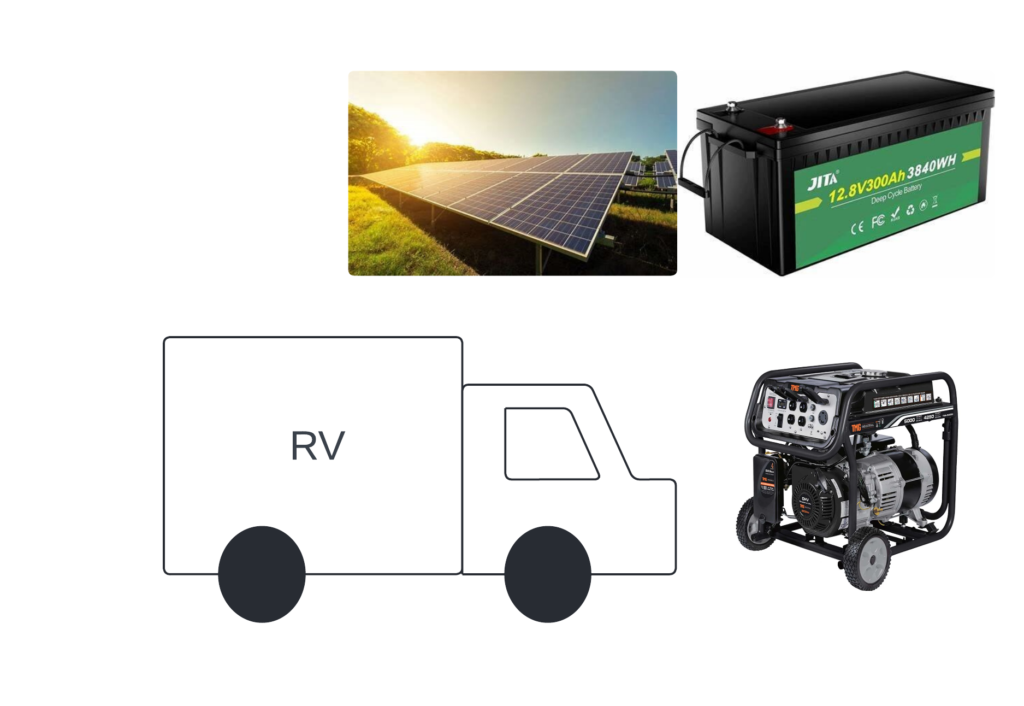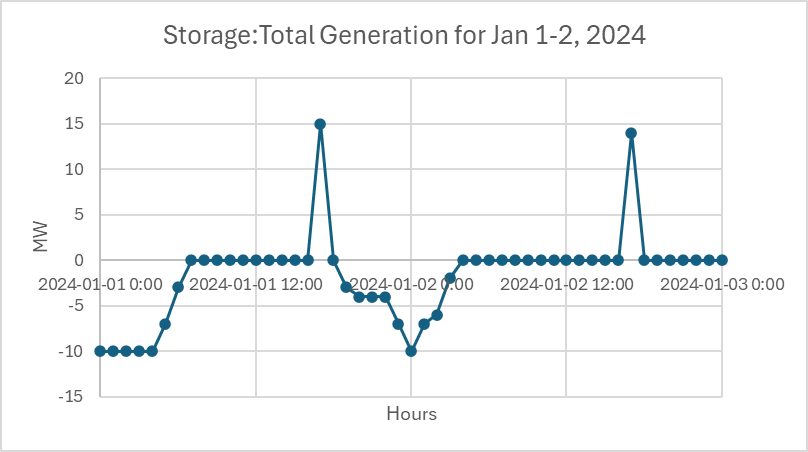A familiar example
Some of us are fortunate enough to go camping in the West country. If we want power, we might have a solar panel, storage battery and a backup generator.

This is a self-contained power grid. The solar panels provide more power than we demand during the day. The surplus is stored in the battery. Our power demand increases in the evening, which exhausts the battery. Then we use the generator to keep the lights on, but no more because the generator is expensive to run.
This strategy maximizes the utilization of renewable energy and minimizes the amount of power generated by the gas-fired backup supply.
Does this conclusion apply if we use battery storage on the Alberta grid?
Classifications
We recall the Supply classifications for power generation.

The most important are the On-Call sources because these provide additional power to meet additional demand, and these are the ones that are turned down when there are renewable supplies. Alberta uses gas fired generators for On-Call sources, and these have relatively high carbon emissions per MW.hr of power.
In a previous blog post I classified Battery Storage as being between Opportunistic and On-Call. We decide when to deliver power to the grid (thus On-Call) but the battery must be charged (thus Opportunistic).
Analysis
Renewable sources provide about 27% of Alberta total power demand. If we deduct Cogeneration (which is very efficient and depends on industries that need heat anyways) then it is around 42% of our power demands.
Alberta Power Generation on May 8, 2024
| GROUP | MC | TNG | DCR | TNG% |
| Simple Cycle | 1781 | 466 | 13 | 4.5% |
| Gas Fired Steam | 2612 | 856 | 88 | 8.3% |
| COAL | 420 | 203 | 11 | 2.0% |
| DUAL FUEL | 466 | 466 | 0 | 4.5% |
| Combined Cycle | 3010 | 1563 | 0 | 15.1% |
| Cogeneration | 5254 | 3608 | 18 | 34.8% |
| HYDRO | 894 | 197 | 183 | 1.9% |
| ENERGY STORAGE | 190 | 0 | 49 | 0.0% |
| SOLAR | 1650 | 607 | 0 | 5.9% |
| WIND | 4481 | 2215 | 0 | 21.4% |
| OTHER | 444 | 189 | 0 | 1.8% |
| TOTAL | 21202 | 10370 | 362 | 100.0% |
We still need gas fired generators to make up the difference between our Demand and the Supply from Wind+Solar, even on the windiest and brightest days.
Hold it. Today, Alberta does not have a surplus of renewable power compared to the total demand. Every MW.hr of renewable power can be delivered to the grid and we still need to make up the difference with gas-fired power.
Then why do people want to install battery storage? What is the implication of battery storage?
Show me the money
We need to look at a time-series trend to see typical patterns where a battery is charged and delivers power back to the grid. The data for January 1-2, 2024 shows typical patterns.

The storage batteries charge late in the evening (between 10:00 PM and 4:00 AM) when power is at the lowest cost. Power is then delivered to the grid around 5:00 PM when demand (and price) is the highest. The storage batteries are fully charged during the evening and then discharged during the hours with peak electricity prices.
Charging the storage battery introduces additional demand to the grid. Since we don’t have a surplus of renewable power, the added demand is met by supply from an On-Call gas fired generator. These generators supply power at the highest carbon footprint.
A grid-scale storage battery is typically 85% efficient. A storage battery will deliver 85 MW.hr of electricity to the grid for every 100 MW.hr of electricity used to charge the battery. This 100 MW.hr of electricity comes from an inefficient gas-fired generator. Thus, the carbon footprint of a grid-scale storage battery is 15% higher than our least efficient gas-fired generator.
This is opposite to how we use a storage battery when there is an excess of zero cost renewable power. Rather than using the battery to store excess renewable power for later use, the grid storage batteries are kept fully charged with low cost power and then deliver power to the grid at the highest price.
Summary
The situation in Alberta, today, is that grid scale power storage is based on selling a scarce resource, not reducing carbon emissions. When we have enough renewable power to completely meet our demands then we need to store the surplus in grid scale storage batteries.







